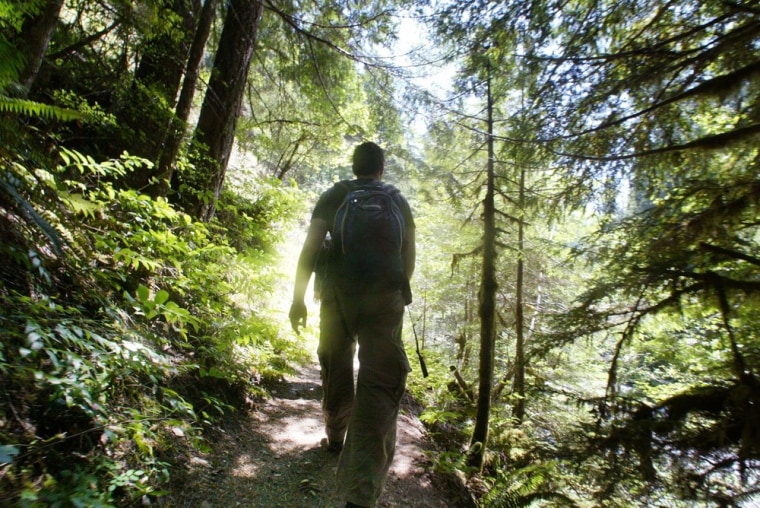The United Nations has designated 2011 the International Year of Forests, but you don’t have to travel overseas — or even across state lines — to celebrate the event. From neighborhood woodlands to America’s national forests, the woods are where it’s at this spring.
“Trees and forests touch people’s lives every day,” said Jay Farrell, executive director of the National Association of State Foresters. “Whether it’s federal, state, private or even just urban trees, the nation couldn’t do without forests. [They’re] critical infrastructure that everyone appreciates even if they don’t understand all the benefits.”
Resources and recreation
Not surprisingly, the International Year of Forests designation is more about responsible management than outdoor recreation. The organization estimates that the world’s forests cover 31 percent of the planet’s land area, serve as home to 300 million people and help maintain the livelihoods of 1.6 billion.
But resources and recreation are not mutually exclusive; in fact, in the U.S., they’re inextricably linked under the multiple-use mandate that both defines the U.S. Forest Service (USFS) and fosters so much contention over its operations. “To provide the greatest amount of good for the greatest amount of people in the long run” was how Gifford Pinchot, the agency’s first chief, put it — apparently leaving the specifics for others to figure out.
“The national parks were basically established for preservation,” said Bill Possiel, president of the National Forest Foundation. “National forests are used by a lot of people for a lot of different activities. That often leaves people confused about what they’re for.”
Hiking, camping and fishing? Check. Mountain biking, ATV-riding and hunting, which are typically restricted or prohibited in national parks? Check. Add in commercial activities — such as logging, grazing, oil and gas extraction — and it’s not surprising that many people don’t have a clear idea of the concept.
Or, in some cases, that they’re even entering a national forest, since most have neither entry fees nor the sort of official portals that national parks have. “The national forest system is much more diffuse than the park system,” said Possiel. “People don’t have that association in their minds that, oh, now I’m going into the Bitterroot or Gifford Pinchot National Forest.”
But go they do. In 2009, 173 million people visited the 155 national forests (and 20 national grasslands) managed by the USFS. According to the agency, another 300 million drove the highways and county roads that traverse the forests, but didn’t stay, stopping only to take a picture or read an interpretive sign. By comparison, America’s 58 national parks saw 62 million visitors that year.
Strengthening the connection
The challenge — and, for that matter, the premise of the International Year of Forests — is to foster a stronger connection between people and wooded places. “A lot of times people think of forests as separate from themselves,” said Erin Uloth, spokesperson for the Tongass National Forest in Alaska. “But you don’t have to leave civilization to walk in the woods.”
Need help determining where to go? Several online tools can help:
Last week, USFS rolled out an
The agency is also working in conjunction with the National Association of State Foresters to maintain an
The third annual GO-Day, or
The latter, it should be noted, is not pegged specifically to forests, yet it speaks to two underlying themes inherent in the International Year of Forests designation — the sheer diversity of wooded places and the importance of raising their awareness among children.
On the diversity front, Farrell of National Association of State Foresters points out that the 193 million acres that constitute USFS holdings account for only 26 percent of the nation’s 750 million acres of forested land. The rest includes state and local forests, private land (often open to public use) and urban trees.
“There are a lot of subtle but compelling values to these tree and forests,” said Farrell, ranging from purifying the air and filtering drinking water to moderating local climates and lowering energy bills.
Forests for the future
At the same time, forest advocates maintain that raising children’s awareness of forests creates an ongoing cycle that benefits both. “Twenty-five years ago, 68 percent of Americans lived in urban areas; today, it’s 80 percent,” said Alex Comfort, executive director of the Cradle of Forestry Interpretive Association. “People don’t live on the land anymore, so it’s increasingly important to explain why forests matter.”
Consider the Cradle of Forestry itself, a historic site located in the Pisgah National Forest, outside Brevard, N.C. Built on the site of the nation’s first school of forestry, it seeks to put the entire multiple-use mandate in perspective via exhibits and hiking trails dedicated to conservation, recreation and resource management.
“We live in an age where kids are basically disconnected from nature,” said Comfort. “We’ve got to make sure they visit forests — that they hike, camp, learn about trees — so that in 20 years, they’ll have the political will as voters to make sure we continue to protect these places.”
